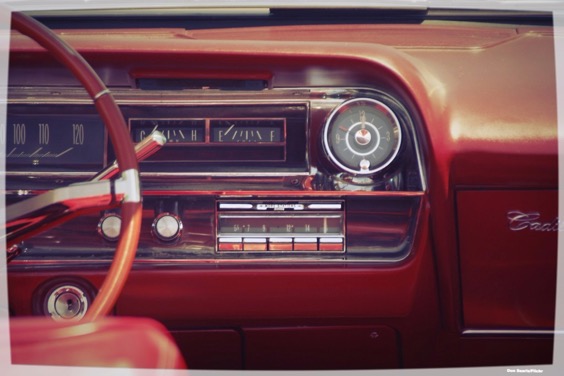

- © 2003 - 2025 Dynamix Productions, Inc. Contact Us 0



"I hate modern car radios. In my car, I don't even have a push-button radio. It's just got a dial and two knobs. Just AM."
Chris Isaak
Maybe you haven't noticed, but AM radio has pretty much sucked the last twenty years or so. Maybe you didn't notice because you weren't listening. A lot of people aren't, and the FCC is out to change that. The FCC? You bet – this isn't your father's FCC. We're so used to hearing "FCC" and "restrictions" in the same breath, that broadcasters were pleasantly surprised last October when the FCC announced an "AM Revitalization" initiative.
The FCC is trying to undo some of its doings from the last ten decades and relax some regulations for AM broadcasters. They hope their actions will entice station owners to become more involved with and provide more interesting programming to their communities. The unravelling of AM radio really started back around 1990 when the FCC wanted to cram more stations between 550 KHz and 1600 KHz. They were also wanting to reduce interference between neighboring stations that bled into each other. One way to do it was to reduce the frequency range of audio from a respectable 10 KHz down to 7.5 KHz. Good enough for talk radio, but bad for music. Their thinking was that FM radio had taken over that genre, and AM radio could survive as talk/news.
Now they're backpedaling and admitting that AM radio, the century-old bastion of broadcasting, may be dying a slow death. And because the listening audience has very few youngsters, there won't be a future generation to support AM radio. Their plan, parts of which are still open to discussion, was rolled out with some immediate solutions to kick start the revitalization. The most noticeable is the use of FM translators. In lay terms, the AM program is simulcast on an FM channel. We have that advantage here in Lexington with WVLK AM 590 simulcasting on 101.1 FM.
Other efforts by the FCC involve relaxing standards for scheduling, coverage area, radio power, and other mind-numbing regulations that only a slide rule carrying broadcast engineer would understand. But the wheels are turning, as they say. Though medium and long term plans are still under discussion, some radio broadcasters and analysts are crying for more changes, even more regulations.
Thankfully most of those arguments are for the listeners, not the broadcasters. The big elephant in the room is the noisy nature of AM radio. Without going in to why, AM has always been susceptible to noise. Manufactures of radios have the ability to filter out much of that noise but choose to build the cheapest AM tuner that they can. The FCC does not regulate AM receivers as it does FM and television, but they could, says broadcaster Larry Langford in Radio World. Langford says the FCC could improve distortion and set bandwidth standards "that would start the slow improvement of receivers as new ones hit the market, especially in cars. And isn’t this all about sound anyway?" Paul Litwinovich of WSHU public radio in Fairfield, CT notes that many vintage radios still outperform most modern radios in AM fidelity and noise suppression, particularly his pre-1930 Atwater Kent Model 55.
And speaking of noise, many offenders are nearby electronic equipment such as computers, appliances, and power tools. They're supposed to be regulated for noise suppression, but the FCC has little resources to police the manufacturers. Power and communications companies are also a big violator of radio noise. That buzz and scratchiness you hear on your AM radio as you drive the streets is coming from power lines, transformers, and other equipment that don't meet FCC criteria.
How else can the FCC help the sound? They could revert back to the broader 10 KHz bandwidth, or even wider, as AM stations drop out of clogged markets. Others propose eliminating the high-power "clear channel" stations to open the AM band up to more local stations.
But the last, and I think most important change, should be the programming. Give the next generation something they want to listen to today. Today's young generation seems to be into everything retro – records, film, long beards, plaid shirts. They gotta sell AM radio as cool and hip. Spin some Rat Pack and martini lounge music mixed with Arcade Fire and LCD Soundsystem. Play a little beatnik poetry mixed with beats. Run old Pabst Blue Ribbon commercials along with West Sixth Brewery spots. You know, I think I would probably listen to that station. I feel young again!
More on the rebirth of AM radio:
Vintage Radio: The Life, Decline and Possible Rebirth of AM
A Closer Look: the AM Radio Revitalization Order
This AM Owner Gives the FCC's New AM Order a C+
FCC's AM Revitalization Guide
AM Broadcast Frequency Spectrum for Dummies
The US Frequency Allocation (detailed PDF)